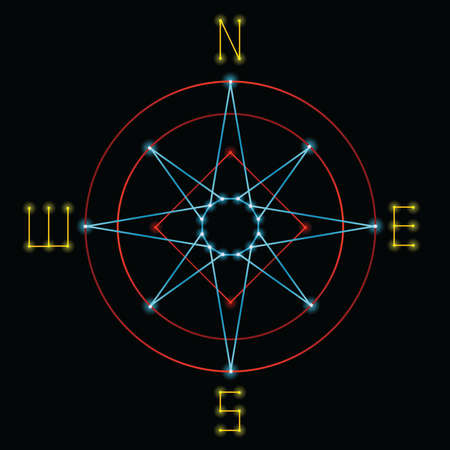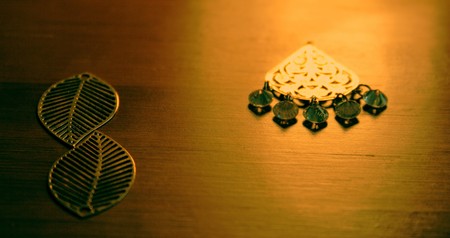Introduction to Vastu and Planetary Influence
Vastu Shastra, the ancient Indian science of architecture and spatial arrangement, has guided the construction and orientation of homes, temples, and cities across Bharat for thousands of years. Rooted deeply in Indian tradition, Vastu goes beyond mere aesthetics; it harmonises human dwellings with the natural forces and cosmic energies believed to govern our universe. A unique aspect of Vastu is its profound connection with astrology, specifically the influences of the Navagrahas—the nine primary planets recognised in Indian astrology. According to traditional beliefs widely respected throughout India, each planet exerts its energy over a particular direction or zone within a built space, thereby shaping the fortunes and well-being of its inhabitants. By understanding this interplay between Vastu directions and planetary powers, many Indian families aspire to create homes that not only reflect cultural values but also invite positive vibrations for health, prosperity, and happiness. This synergy of architecture and astrology remains a cornerstone of Indian culture, blending the wisdom of ancient texts with everyday life.
2. Cardinal Directions and Associated Planets
In the realm of Vastu Shastra, each cardinal direction is governed by a specific planetary force, which deeply influences the energies flowing through an Indian home or space. Understanding these associations helps in harmonizing the built environment with cosmic energies as recognized in Indian astrology.
Main Directions and Their Planetary Rulers
| Direction (Vastu Name) | Planet (Graha) | Indian Term | Key Attributes |
|---|---|---|---|
| East (Purva) | Sun | Surya | Source of energy, vitality, new beginnings |
| West (Paschim) | Saturn | Shani | Maturity, discipline, learning from experiences |
| North (Uttara) | Mercury | Buddha | Intellect, growth, prosperity |
| South (Dakshina) | Mars | Mangal | Courage, strength, dynamism |
Intermediary Directions and Their Graha Influences
| Direction (Vastu Name) | Planet (Graha) | Indian Term | Key Attributes |
|---|---|---|---|
| Northeast (Ishanya) | Jupiter & Moon | Brihaspati & Chandra | Piety, wisdom, spiritual upliftment, peace of mind |
| Southeast (Agneya) | Venus & Fire Element | Shukra & Agni Tatva | Lustre, creativity, passion for life, transformation through fire energy |
| Southwest (Nairutya) | Rahu (Shadow Planet) | – | Ancestral energies, stability, protection from negative forces |
| Northwest (Vayavya) | Moon & Air Element | Chandra & Vayu Tatva | Mental balance, movement, relationships and networking strength |
The Importance of Directional Alignment in Indian Homes
For centuries, Indian families have aligned their homes according to these planetary rulers—placing puja rooms in the Ishanya (Northeast) under Brihaspati’s wisdom or ensuring kitchens face the Agneya (Southeast), harnessing Shukra’s creative energy and the transformative power of Agni. These alignments are not just architectural choices but cultural traditions passed down generations. By honoring Surya in the East for main entrances or Chandra in the Northwest for restful bedrooms, Vastu brings together cosmic forces and practical design for balanced living—a fundamental part of Indian home-making philosophy.

3. Impact on Home Layout and Architecture
In the context of Indian homes, the alignment of planets as per Vastu Shastra has a profound effect on both spatial arrangement and spatial flow. Traditional Indian architecture inherently respects these cosmic directions, ensuring each zone in the house is harmoniously aligned with the planetary influences associated with that direction. For instance, the North-East (Ishan) is linked to Jupiter and considered highly auspicious for pooja rooms or meditation spaces, promoting peace and prosperity. Conversely, the South-West (Nairutya), governed by Rahu, is best reserved for heavy storage or master bedrooms to ground energies and provide stability. This spatial logic influences everything from entrance placement to kitchen orientation.
Modern Indian homes, even with evolving aesthetics and compact layouts, continue to integrate Vastu principles. Many architects blend contemporary design with traditional Vastu wisdom by carefully zoning living areas, workspaces, and relaxation corners according to planetary directions. This thoughtful planning not only maximises natural light and ventilation but also aims to channel positive energy flows throughout the home. The result is a seamless fusion of old-world ethos and new-age functionality—where every room resonates with cosmic balance tailored to the family’s needs.
4. Benefits of Harmonising Spaces as per Vastu Planets
In Indian homes and offices, the integration of Vastu Shastra with planetary directions holds a deep-rooted cultural significance. By aligning residential and workspace zones according to planetary influences, individuals experience a spectrum of advantages that are cherished in daily Indian life. Let’s explore how these spatial alignments promote not only material prosperity but also mental well-being and harmonious living.
Daily Life and Cultural Advantages
Adhering to Vastu principles is believed to create an environment where the energies of the planets—Surya (Sun), Chandra (Moon), Budh (Mercury), Shukra (Venus), Mangal (Mars), Guru (Jupiter), Shani (Saturn), Rahu, and Ketu—are harnessed for positive outcomes. The benefits manifest in various aspects:
| Planet | Vastu Direction | Daily Life Benefit | Cultural Significance |
|---|---|---|---|
| Sun (Surya) | East | Boosts energy, clarity, health | Auspicious start to the day; Surya Namaskar rituals |
| Moon (Chandra) | North-West | Emotional balance, peace at home | Calmness during festivals like Karva Chauth |
| Mars (Mangal) | South | Strengthens security, courage, drive | Vitality in traditional family leadership roles |
| Mercury (Budh) | North | Enhances intellect and communication skills | Success in education and business negotiations |
| Jupiter (Guru) | North-East | Paves way for wisdom, learning, spirituality | Sacred spaces for pooja and meditation practices |
| Venus (Shukra) | South-East | Attracts wealth, creativity, relationships harmony | Kitchens and creative corners energised by Lakshmi puja traditions |
| Saturn (Shani) | West | Promotes discipline, stability, perseverance | Aids long-term planning and legacy building in families |
| Rahu & Ketu | South-West & North-East/South-East axis | Cleanses negative energies, prevents obstacles | Cultural remedies through vastu corrections during Graha Shanti pujas |
The Prosperity-Mental Well-being Linkage in Indian Contexts
Prosperity: Indian families believe that correct placement of main doors, pooja rooms, kitchens, and bedrooms as per planetary Vastu brings financial growth and social respect. For instance, placing the cash box or locker facing North under Mercurys domain is considered highly auspicious.
Mental Well-being: By allocating spaces like bedrooms in Moon-ruled directions or meditation zones towards Jupiter’s North-East, households foster peace of mind and stronger inter-personal bonds—a reflection of ‘Ghar ki Shaanti’ valued across Indian cultures.
Cultural Rituals Enhancing Spatial Harmony
The application of Vastu with astrology is often supported by traditional rituals such as Griha Pravesh or Navagraha Homa. These ceremonies further synchronise planetary influences within the built environment, amplifying both material success and emotional contentment.
A Lifestyle Embedded with Cosmic Balance
The alignment of living and working spaces with key Vastu directions influenced by planets goes beyond aesthetics—it becomes a holistic approach to joyful living. This practice not only respects ancient wisdom but also adapts seamlessly into modern Indian lifestyles by supporting prosperity, wellness, and cultural continuity.
5. Simple Vastu Tips for Everyday Indian Homes
Practical Vastu Remedies for Indian Living Spaces
Adapting your home, flat, or office to the principles of Vastu Shastra—while considering planetary influences from Indian astrology—can be straightforward and deeply rooted in local tradition. Here are practical and popular remedies tailored to everyday Indian spaces:
North-East (Ishaan) – Jupiter’s Blessing
Keep this direction clean, light, and clutter-free. Place a water pot or a small temple here, as is common in many Indian households. Avoid heavy storage or toilets in this zone to enhance spiritual energy and wisdom, aligning with Jupiter’s auspicious influence.
South-East (Agneya) – Mars’ Energy
The kitchen should ideally be placed here, according to most Indian Vastu experts. Use red, orange, or pink hues in this area to amplify Mars’ positive effects. Ensure cooking faces east whenever possible—a practice widely observed across India.
South-West (Nairutya) – Rahu & Saturn’s Domain
This direction is best suited for master bedrooms or storage of valuables. Place heavier furniture here for stability and use earthy colors like brown or cream, echoing popular Indian interior trends. Avoid water elements such as fountains or aquariums.
North-West (Vayavya) – Moon’s Influence
Guest rooms or children’s rooms are best placed in this direction. Airy curtains and light white or cream shades suit this space well. Placing a bowl of water or silver vessel can enhance harmony, following time-honored practices in Indian homes.
Central Space (Brahmasthan) – Energy Balance
Keep the center of the home open and unobstructed; avoid placing heavy objects here. Many Indian families maintain this area as a clear pathway or decorate it with rangoli during festivals to invite cosmic balance.
Additional Local Suggestions
– Hang a traditional toran (door hanging) at the main entrance for positive vibes.
– Place sacred symbols like Om or Swastika near entrances, a widespread Indian custom.
– Light a diya (oil lamp) daily in the north-east corner to strengthen auspicious planetary energies.
– Grow tulsi (holy basil) near the entrance or courtyard—a revered plant in most Indian homes.
Integrating these simple yet effective Vastu tips helps align your living and working spaces with astrological energies while resonating with India’s rich cultural traditions.
6. Common Myths and Regional Variations in Vastu
Vastu Shastra, deeply rooted in Indian tradition, is often surrounded by myths and misconceptions that vary across the subcontinent. While the core principles link directions to planetary influences, such as the east with Surya (Sun) or north with Budh (Mercury), many widely held beliefs are not universal truths but rather shaped by local interpretations and community customs.
Addressing Popular Myths in Vastu
A common misconception is that a single Vastu layout suits every home, regardless of region or family needs. In reality, the ideal orientation and room allocation must consider both astrological factors and practical aspects like geography, climate, and lifestyle. For instance, while some believe that only northeast-facing entrances are auspicious due to their association with Jupiter (Guru), Vastu texts actually allow for flexibility based on site constraints and individual horoscopes.
Regional Diversity in Vastu Practices
The diversity of India’s cultural landscape has led to unique regional adaptations of Vastu. In Kerala, traditional homes incorporate “Nalukettu” courtyards designed for airflow rather than strict directional adherence. In Rajasthan, desert climates influence Vastu layouts, prioritizing thick walls and shaded verandas over cardinal alignments. South Indian temple architecture often aligns sanctums based on local star positions rather than fixed north-south axes.
Community-Based Customs
Among different communities—such as Marwaris in Rajasthan or Chettiars in Tamil Nadu—Vastu guidelines blend with ancestral rituals and regional beliefs. What is considered inauspicious placement in one state may be perfectly acceptable in another due to these localized traditions.
The Importance of Contextual Understanding
When following Vastu guided by astrology, it is essential to recognize that the science is dynamic, not dogmatic. Consulting experienced Vastu practitioners who understand both planetary influences and regional nuances ensures harmonious space planning that respects both tradition and practicality.
In summary, while planetary influences on key directions remain a foundational aspect of Indian Vastu, widespread myths and regional variations highlight the importance of adapting these principles to suit local culture and individual requirements for truly auspicious living spaces.
7. Conclusion: Embracing Vastu and Astrology in Modern India
In contemporary India, the seamless fusion of Vastu Shastra and astrology continues to shape the way people perceive and design their living and working spaces. Despite the rapid urbanisation and adoption of global architectural styles, many Indians still consult Vastu experts and astrologers before making significant decisions about property layout, construction, or renovation. This ongoing practice is rooted in the belief that aligning a space with auspicious planetary influences and cardinal directions brings peace, prosperity, and positive energy.
As Indian society evolves, there is a growing appreciation for balancing tradition with modernity. Urban architects and interior designers now often collaborate with Vastu consultants to integrate ancient wisdom into contemporary designs. Whether it is orienting the main entrance towards an auspicious direction governed by Mercury or ensuring the kitchen aligns with the fiery influence of Mars, these practices are thoughtfully woven into modern layouts without compromising aesthetic appeal or functionality.
Furthermore, advancements in technology and communication have made Vastu and astrological consultations more accessible than ever before. From high-rise apartments in Mumbai to IT campuses in Bengaluru, the principles guiding key directions influenced by planets remain relevant and revered. Families continue to perform rituals during Griha Pravesh (housewarming) ceremonies, reflecting a collective respect for cosmic harmony and ancestral traditions.
Ultimately, the harmonious blend of Vastu Shastra and astrology exemplifies India’s unique ability to honour its cultural heritage while embracing innovation. By thoughtfully integrating these time-honoured principles into modern environments, Indians nurture spaces that support well-being, growth, and happiness—proving that ancient wisdom can coexist beautifully with contemporary lifestyles.


